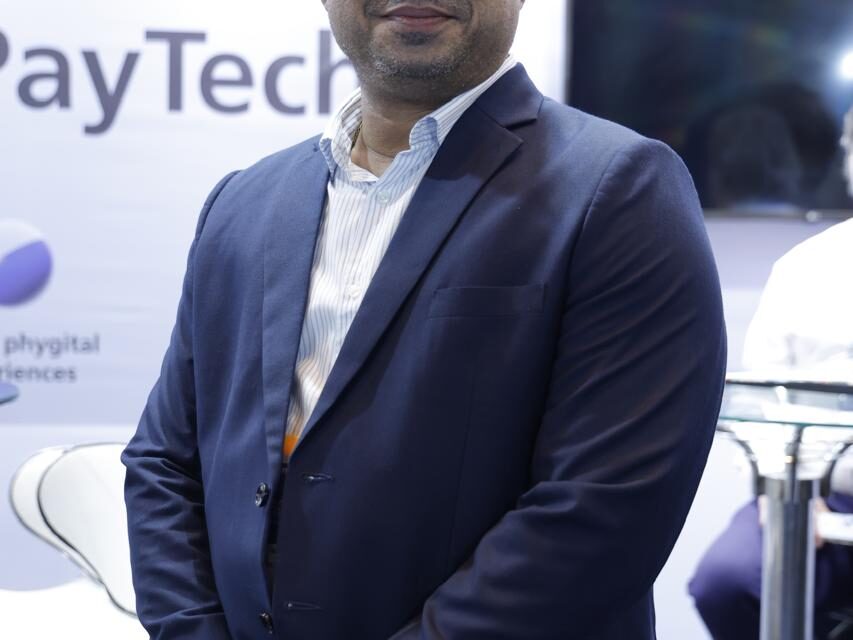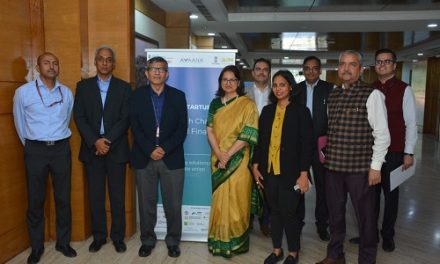In a rapidly changing world, we seldom take a moment to reflect on our payment methods. Simply swiping cards has become the norm. But have you ever considered the huge environmental impact of this seemingly harmless plastic item As we are becoming cognizant of threats confronting our planet, the sustainability of plastic-based payment methods is becoming increasingly scrutinised. Every year, trillions of cards are created, used for a short time, and then discarded. The cards that are discarded often end up in the garbage or are burnt to create the growing problem of plastic waste.
Mr. Naresh Rao, Vice President & Sales Head Issuance Products – G+D
Its indisputable that traditional plastic payment cards made of polyvinyl chloride (PVC) pose a significant environmental threat. While they are extremely durable, their toughness comes at a terrible cost when carelessly discarded, as they release toxic chemicals that damage ecosystems over time. Therefore, an essential question emerges: Are our payment methods flexible enough to adapt to our global commitment to environmental preservation
For years, this question hung in the air, unanswered. But now, Giesecke+Devrient (G+D), a titan in payment solutions and technology, has embarked on a groundbreaking mission-not just to change how we pay but to overhaul the materials we use completely. With revolutionary innovations like cards made from ocean plastic, plant-based biodegradable options, and an audacious goal for net-zero emissions, G+D is tackling the monumental task of reshaping the payment industry into a sustainable powerhouse. Their message is unmistakable-plastic payments may not completely disappear, but the process of creating and disposing of them is poised for a significant transformation.
A Journey Towards Net Zero: G+D’s Commitment
G+Ds vision centres around its commitment to sustainability. G+D has set itself a goal of reaching net-zero carbon emissions by 2040. This ambitious target involves cutting greenhouse gas emissions across its business, from green energy usage and production processes to actively minimising them. The company is taking concrete climate action alongside its mission to transform payments. By actively minimising emissions rather than offsetting them, this move signals its intent of leading by example and moving payment industry practices in this direction.
The Parley Ocean Card: Turning Plastic Waste Into A Symbol of Change
Plastic waste is choking the oceans, an essential life support system, but G+Ds Convego Parley Ocean card offers some hope to combat its negative impact. Utilising ocean plastic, the Parley Ocean card stands as more than just an alternative to traditional plastic cards; it stands as a symbol of change. Crafted entirely of recycled layers sourced from 100% recycling programs worldwide and with at least 75% of its plastic content sourced directly from coastal environments around the globe, its usage signifies change. G+D sends a powerful message through this card: every swipe of your card can help protect our oceans. More than merely practical, this card serves as a constant reminder that every choice we make has a lasting effect. G+Ds innovative technology and environmental responsibility come together in this initiative with their Parley Ocean card, designed to transform consumer behaviour by encouraging them to consider their environmental footprint each time they use payment cards.
Beyond Plastic: Creating a Greener Life Cycle for Payment Cards
G+D’s sustainability efforts don’t stop at using recycled materials. The company is taking an even broader approach, working with banks and financial institutions to ensure that the entire lifecycle of a payment card has a reduced carbon footprint.
Partnering with initiatives like the Greener Payments Partnership (GPP), G+D is working to eliminate the use of virgin PVC plastic in card production by 2030. In addition to this, they are developing recycling programs for end-of-life cards, helping banks to responsibly recycle old cards rather than discarding them in landfills or incineration them.
From the materials utilised in card production to the recycling initiatives offered at the end of their lifecycle, G+D is dedicated to creating a circular economy for payment cards. Their eco-cards, which include options constructed from recycled plastics, biodegradable plant-based plastics, and ocean plastics, carry the Mastercard sustainability seal, a testament to their commitment to environmental responsibility.
The Natural Card: A Step Toward Biodegradable Payments
One of the standout innovations in G+D’s eco-friendly payment options is the Convego Natural card. Unlike conventional plastic cards, the natural card is produced from polylactic acid (PLA), a biodegradable material derived from plants.
PLA is revolutionising composting like never before. This incredible material decomposes completely, vanishing without a single toxic remnant. This card is a testament to the fact that sustainability can be attained without sacrificing strength or usability. It stands tall against plastic, offering the same reliability while being a fraction of the environmental threat.
Leading the Industry Towards a Greener Future
It’s not just about G+D setting its standards. The company is actively encouraging the rest of the payment industry to follow suit. G+D was the first in the industry to make a Pledge 2030 commitment to eliminate virgin plastic from payment cards by 2030. Competitors like MasterCard are also starting to take notice, with Mastercard pledging to remove first-use PVC plastic from its network by 2028.
This collective push toward eco-friendly practices is already making waves. More and more, payment cards without virgin plastic are becoming symbols of social and environmental change. It’s not just about reducing plastic waste-it’s about creating a tangible shift in how businesses operate and how consumers engage with these products.
Future Initiatives for a Greener Product Line
G+D remains committed to being more eco-friendly with its products and services, seeking out ways to increase environmental friendliness. By increasing recycling initiatives, decreasing packaging waste, and creating digital tools to help monitor environmental impacts for individual consumers, G+D is taking an aggressive stance toward greening the payment industry. G+Ds goal to rid themselves of virgin plastic by 2030 is only one component of their ambitious long-term vision. They are working with banks to inform customers about the environmental footprint of their purchases while offering opportunities for carbon offset. As digitalisation drives G+Ds green agenda, the company is also developing innovative APIs and tools to aid banks and their customers in minimising their environmental footprint. G+D is leading this transformation of payments-digital, green, and secure payments are in our future.
In conclusion, as we move towards a more eco-conscious world, G+D is leading the charge to create an eco-conscious world by showing that plastic payments dont have to become obsolete, but they must adapt. Through innovations like Parley Ocean Card and Convego Natural Card, they demonstrate how even simple decisions, like picking out payment cards, can make an enormous difference for our planets future.











